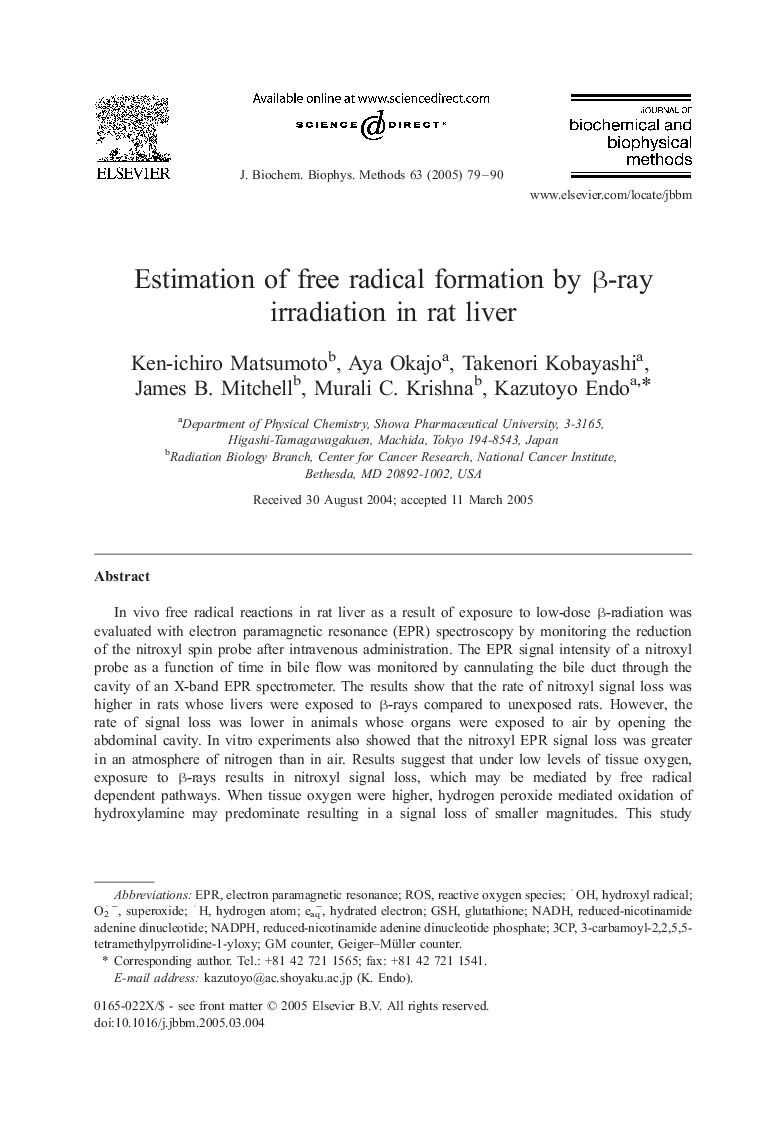| Article ID | Journal | Published Year | Pages | File Type |
|---|---|---|---|---|
| 10824938 | Journal of Biochemical and Biophysical Methods | 2005 | 12 Pages |
Abstract
In vivo free radical reactions in rat liver as a result of exposure to low-dose β-radiation was evaluated with electron paramagnetic resonance (EPR) spectroscopy by monitoring the reduction of the nitroxyl spin probe after intravenous administration. The EPR signal intensity of a nitroxyl probe as a function of time in bile flow was monitored by cannulating the bile duct through the cavity of an X-band EPR spectrometer. The results show that the rate of nitroxyl signal loss was higher in rats whose livers were exposed to β-rays compared to unexposed rats. However, the rate of signal loss was lower in animals whose organs were exposed to air by opening the abdominal cavity. In vitro experiments also showed that the nitroxyl EPR signal loss was greater in an atmosphere of nitrogen than in air. Results suggest that under low levels of tissue oxygen, exposure to β-rays results in nitroxyl signal loss, which may be mediated by free radical dependent pathways. When tissue oxygen were higher, hydrogen peroxide mediated oxidation of hydroxylamine may predominate resulting in a signal loss of smaller magnitudes. This study shows possible evidence of reactive oxygen species formation by low-dose β-ray irradiation in a living animal.
Keywords
Related Topics
Life Sciences
Biochemistry, Genetics and Molecular Biology
Biochemistry
Authors
Ken-ichiro Matsumoto, Aya Okajo, Takenori Kobayashi, James B. Mitchell, Murali C. Krishna, Kazutoyo Endo,
